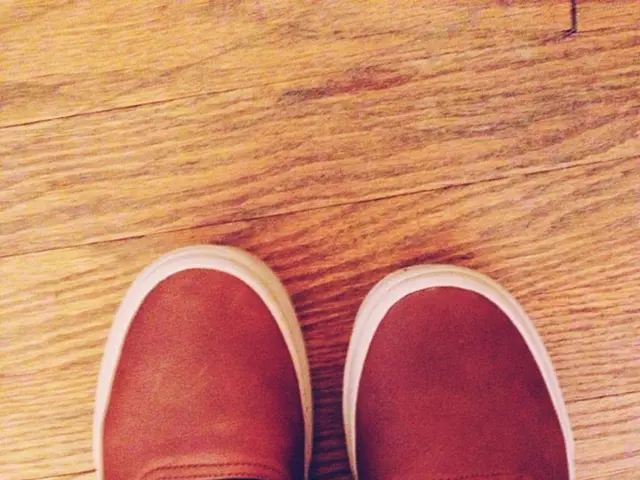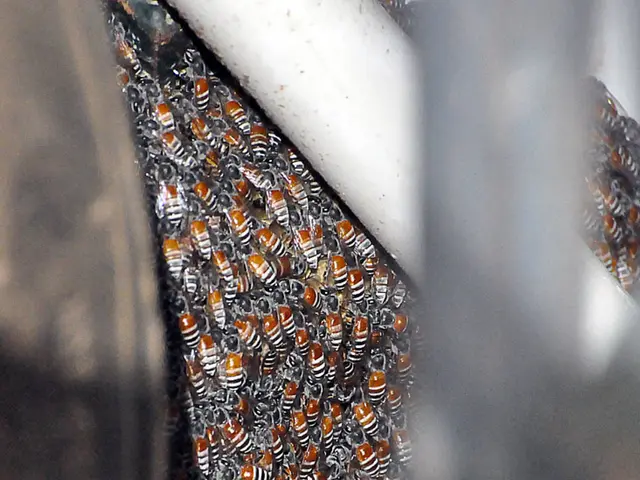Guide for Clubbing Canine Cuts
Dogs, as playful and adventurous as they may be, can sometimes encounter various types of wounds that require specific care to ensure proper healing and prevent complications. Here's a guide to help you understand the different types of dog wounds and how to care for them.
Dog wounds can be caused by a variety of factors, such as other dogs, vehicular accidents, fights with cats, sharp objects, infections, and unavoidable accidents. Scrapes, burns, lacerations, degloving injuries, puncture wounds, envenomation, hot spots, and eye wounds are some common types of dog wounds.
Scrapes (abrasions) are superficial wounds that occur when the outer layer of the skin is rubbed or scraped off. These wounds typically affect the epidermis or superficial layers. To care for scrapes, clean the area with warm water, apply a dog-safe antiseptic, and protect the area to avoid infection and further trauma.
Burns can happen due to exposure to heat, chemicals, or radiation, damaging the skin and underlying tissues. Treatment depends on burn severity but generally requires cooling the area, pain management, cleaning, and often veterinary care to prevent infection and promote tissue repair.
Lacerations are deep cuts or tears in the skin caused by sharp objects. These wounds may bleed heavily and sometimes require suturing. Immediate first aid includes controlling bleeding with direct pressure, cleaning the wound, and seeking veterinary attention for possible stitches.
Degloving injuries involve large sections of skin being torn away from underlying tissue, often from trauma or accidents. These are severe wounds needing urgent veterinary care, often surgical intervention, and careful wound management.
Puncture wounds are caused by sharp, pointed objects penetrating the skin, creating deep, narrow wounds. Because puncture wounds can trap bacteria and debris inside, thorough cleaning and veterinary evaluation are essential to prevent deep infections.
Envenomation wounds result from bites or stings injecting venom, causing localized tissue damage and systemic effects. These require immediate veterinary treatment involving venom neutralization, wound care, and monitoring of systemic signs.
Hot spots (acute moist dermatitis) are localized skin infections and inflammation caused by chronic licking, scratching, moisture, or minor trauma that break the skin barrier and bacterial overgrowth. They appear as red, moist, painful patches and respond well to cleaning, topical antimicrobials, and reducing licking or irritation.
Eye wounds involve trauma to the delicate eye structures and require careful management to prevent vision loss. Treatment includes protecting the eye, preventing infection, and usually prompt veterinary evaluation.
In general, wounds in dogs are classified as clean, contaminated, or infected, and this categorization guides treatment approaches including cleaning, antiseptic application, antimicrobial therapy, and sometimes surgical intervention to optimize healing. Platelet-rich plasma and similar biologics have shown promise in enhancing wound healing due to their roles in inflammation control and antimicrobial effects.
Prompt and appropriate first aid—cleaning wounds with warm water, applying dog-safe antiseptics, controlling bleeding, and preventing licking (e.g., with Elizabethan collars)—is key for minor wounds to prevent infection and promote healing. More severe or complicated wounds should be evaluated by a veterinarian for specialized care.
Remember, it's crucial to clean a dog's wound promptly and properly to clear it of bacteria and avoid dangerous infections. Always consult with a veterinarian for proper guidance and treatment for your dog's specific wound.
References: 1. Hot Spots in Dogs: Causes, Symptoms, and Treatment. (n.d.). VCA Hospitals. Retrieved March 20, 2023, from https://vcahospitals.com/know-your-pet/hot-spots-in-dogs-causes-symptoms-and-treatment 2. First Aid for Wounds. (n.d.). American Kennel Club. Retrieved March 20, 2023, from https://www.akc.org/expert-advice/health/first-aid-for-wounds/ 3. Platelet-Rich Plasma in Veterinary Medicine. (2020, February 21). Vetstream. Retrieved March 20, 2023, from https://www.vetstream.com/treatment/platelet-rich-plasma-veterinary-medicine 4. Wound Management in Dogs and Cats. (2019, September 16). Merck Veterinary Manual. Retrieved March 20, 2023, from https://www.merckvetmanual.com/dog-owners/wounds-and-injuries/wound-management-in-dogs-and-cats/wound-management-in-dogs-and-cats
Dogs, not limited to their lifestyle, can experience various types of fashion-and-beauty-related injuries such as hot spots (acute moist dermatitis), which are localized skin infections and inflammation caused by chronic licking, scratching, moisture, or minor trauma that break the skin barrier and bacterial overgrowth. When it comes to home-and-garden, proper care should be taken to ensure a dog-safe environment that minimizes risks of wound-causing accidents like sharps, burns, or degloving injuries.




